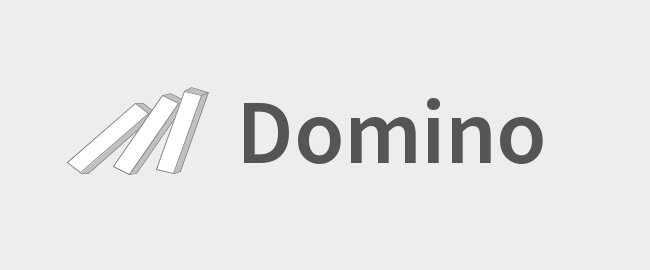Domino's project page and all of its documentation has moved to GitHub. There you will also find new versions. This page is kept for historical reasons only.
Write elegant OSGi bundle activators in Scala
What is Domino?
And how does it compare to other projects?
Domino is a small library for the programming language Scala designed to support developers in writing bundle activators for the Java module system OSGi. It strives to make writing complex and highly-dynamic bundle activators as easy as possible without sacrificing the power of the OSGi API.
As such, Domino is a lightweight alternative to OSGi component models like iPOJO, Blueprint and Declarative Services. Especially for those who want to leverage the power of pure code instead of reverting to an XML- or annotation-based approach.

